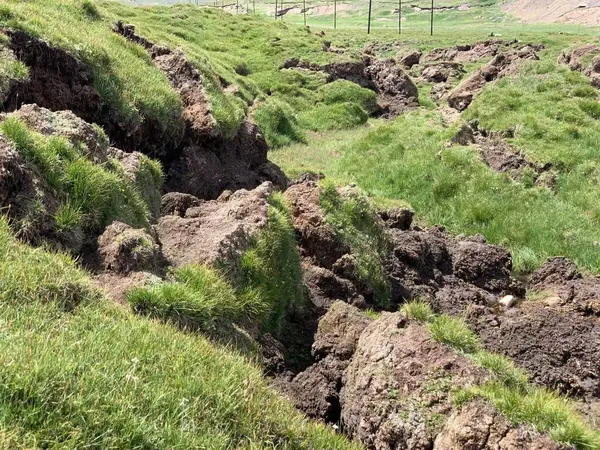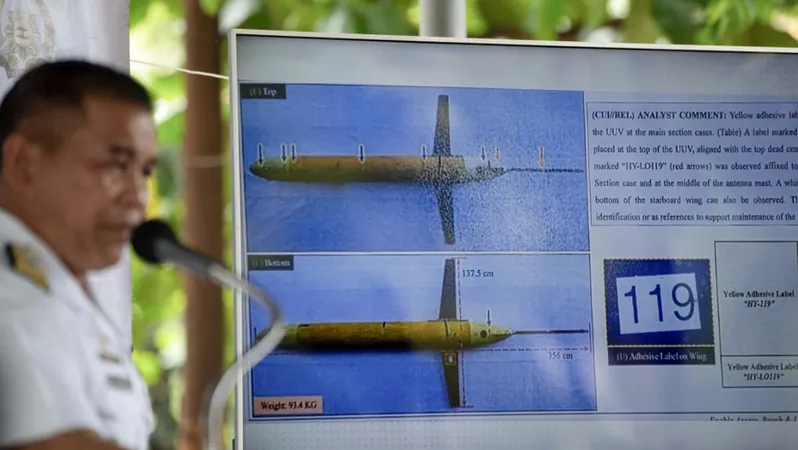
Groundbreaking Study Reveals New Predictions on Permafrost Loss in High Mountain Asia Amid Global Warming
2024-10-28
Author: Mei
Introduction
In a significant advance for climate science, recent research is offering refined estimates on the future of permafrost loss in High Mountain Asia (HMA), an area that has become a focal point in the fight against climate change. Understanding these predictions is essential, as HMA houses over 70% of the world's low-latitude mountain permafrost, which plays a pivotal role in global carbon storage.
Equilibrium Climate Sensitivity (ECS)
The study, published in Geophysical Research Letters, sheds light on a critical aspect of climate modeling: the concept of 'equilibrium climate sensitivity' (ECS). This metric gauges how much the global surface temperature is expected to increase with rising levels of carbon dioxide. Unfortunately, many models predict ECS values that exceed realistic ranges, contributing to fears of exaggerated warming. In fact, about 40% of the models used in current global climate assessments suggest ECS values beyond the expected 2.5°C to 4°C range, skewing our expectations of environmental impacts.
The Role of Permafrost
Permafrost, which is defined as soil that remains frozen for at least two consecutive years, is not merely a chilly region of earth; it is a substantial storehouse of carbon. When thawed, it releases this carbon into the atmosphere, intensifying the already precarious situation of global warming. In regions like HMA, where temperatures are rising, the question is no longer whether permafrost will melt, but rather how much and how quickly.
Refining Climate Models
Addressing the shortcomings of traditional models, researchers from the Institute of Atmospheric Physics at the Chinese Academy of Sciences employed a novel statistical method to correct the biases in ECS values. According to the latest assessments, the best estimate of ECS stands at around 3°C, leading the team to adjust their projections accordingly.
Future Predictions
The revised predictions indicate that HMA could see a reduction in permafrost area ranging from 37% to 64% by the years 2081-2100, assuming mid- to low-emission pathways. This is a significant decrease from earlier models which often overstated potential losses by as much as 10%. However, if high-emission scenarios continue unchecked, the outlook is dire: HMA may be nearly devoid of permafrost by century's end.
Conclusion and Implications
Lead author Dr. Jie Jiang highlighted the importance of realistic temperature models: 'With global initiatives focused on limiting warming to 1.5°C or 2°C by 2100, this study reveals that refined emissions policies significantly reduce the likelihood of extreme warming scenarios. More precise temperature assessments not only enhance our understanding of permafrost dynamics in High Mountain Asia but also serve as vital indicators for other vulnerable regions worldwide.'
As alarming as these changes may sound, the refined estimates presented in this research pave the way for more informed and effective climate actions globally. Scientists and policymakers must use this new information to steer efforts in mitigating against climate change, ensuring a more sustainable future for vulnerable ecosystems everywhere. In a world grappling with the consequences of climate change, these insights could provide the key to preserving vital natural resources and combatting rising emissions effectively.


 Brasil (PT)
Brasil (PT)
 Canada (EN)
Canada (EN)
 Chile (ES)
Chile (ES)
 Česko (CS)
Česko (CS)
 대한민국 (KO)
대한민국 (KO)
 España (ES)
España (ES)
 France (FR)
France (FR)
 Hong Kong (EN)
Hong Kong (EN)
 Italia (IT)
Italia (IT)
 日本 (JA)
日本 (JA)
 Magyarország (HU)
Magyarország (HU)
 Norge (NO)
Norge (NO)
 Polska (PL)
Polska (PL)
 Schweiz (DE)
Schweiz (DE)
 Singapore (EN)
Singapore (EN)
 Sverige (SV)
Sverige (SV)
 Suomi (FI)
Suomi (FI)
 Türkiye (TR)
Türkiye (TR)
 الإمارات العربية المتحدة (AR)
الإمارات العربية المتحدة (AR)